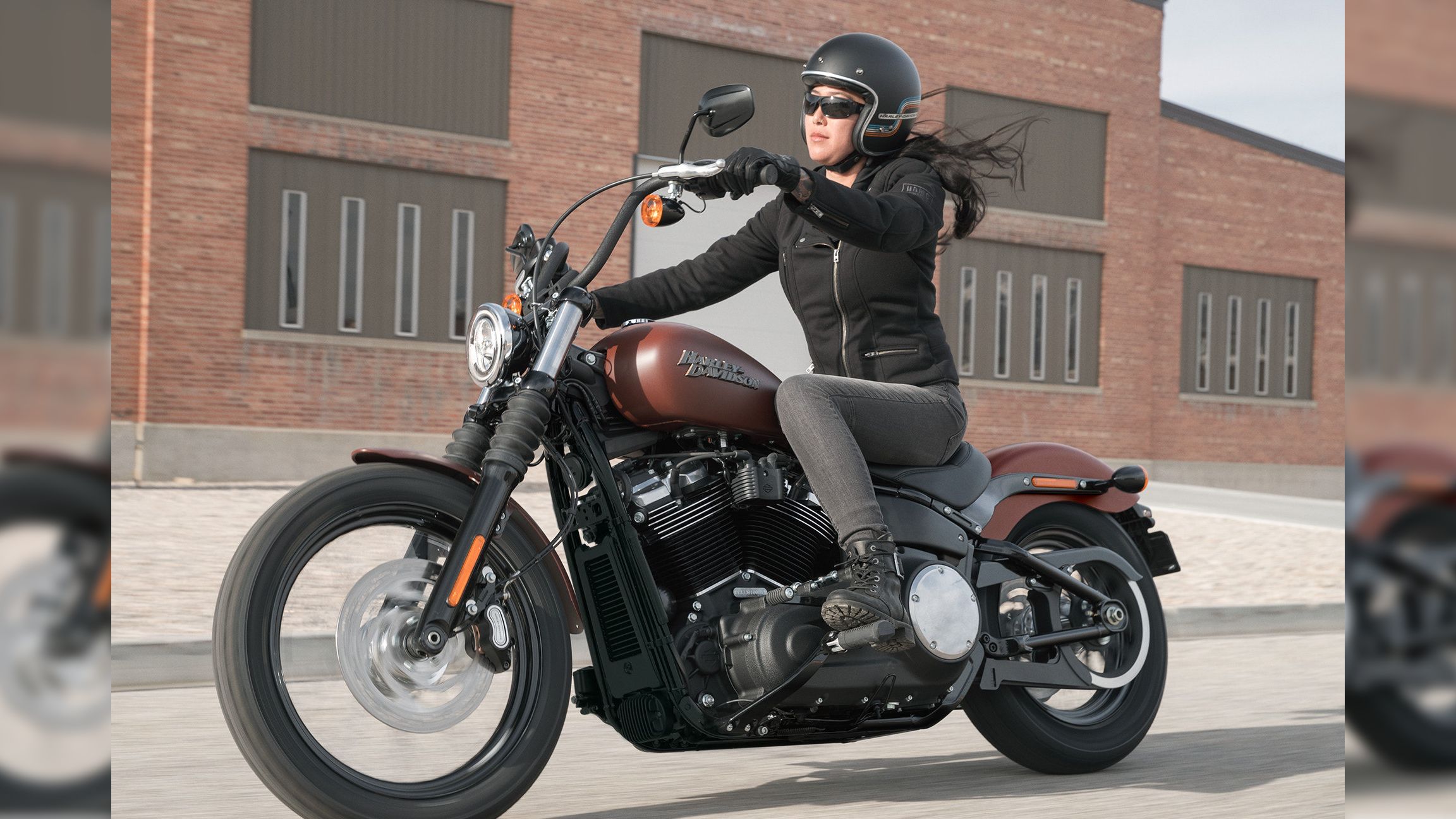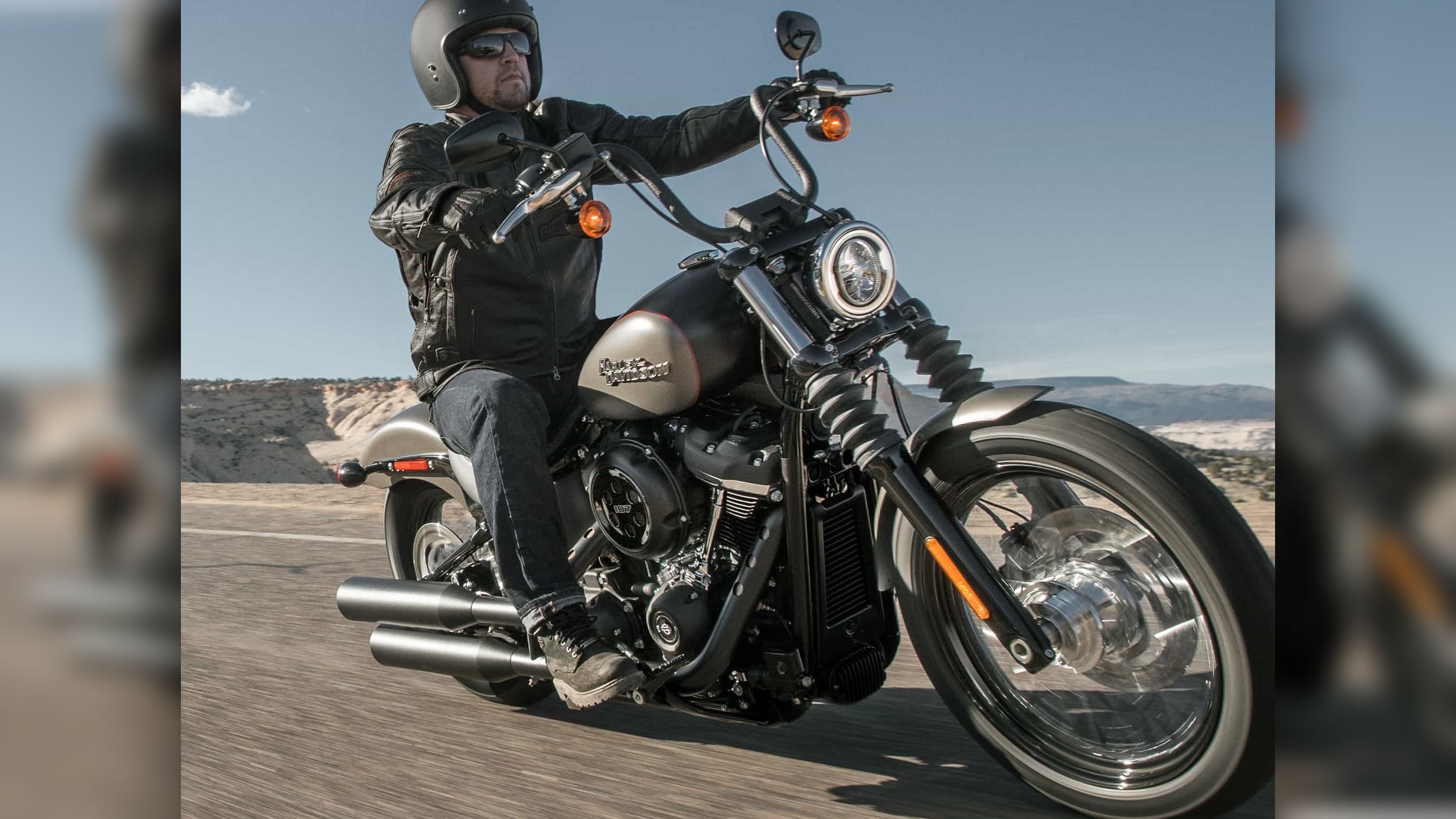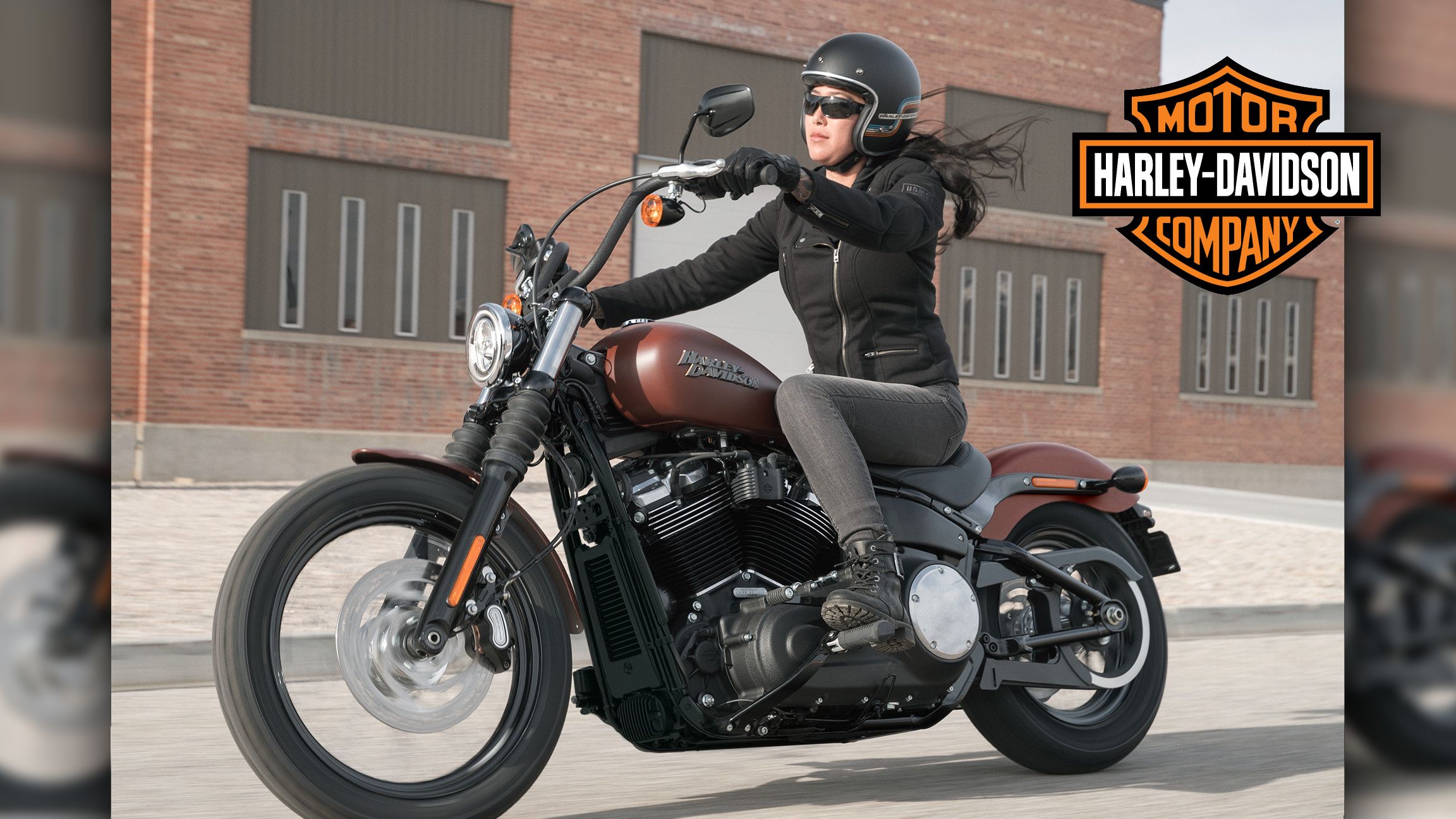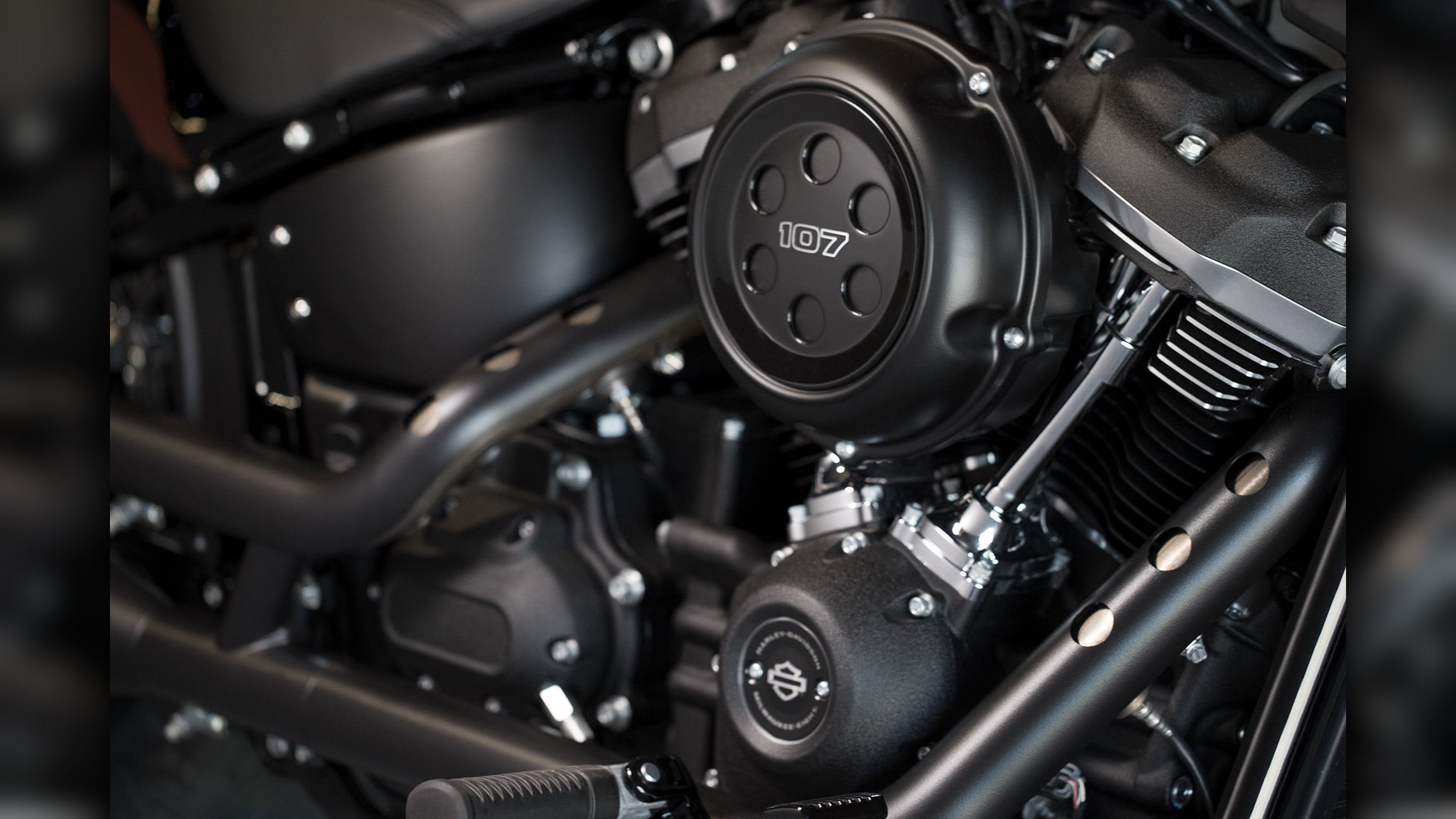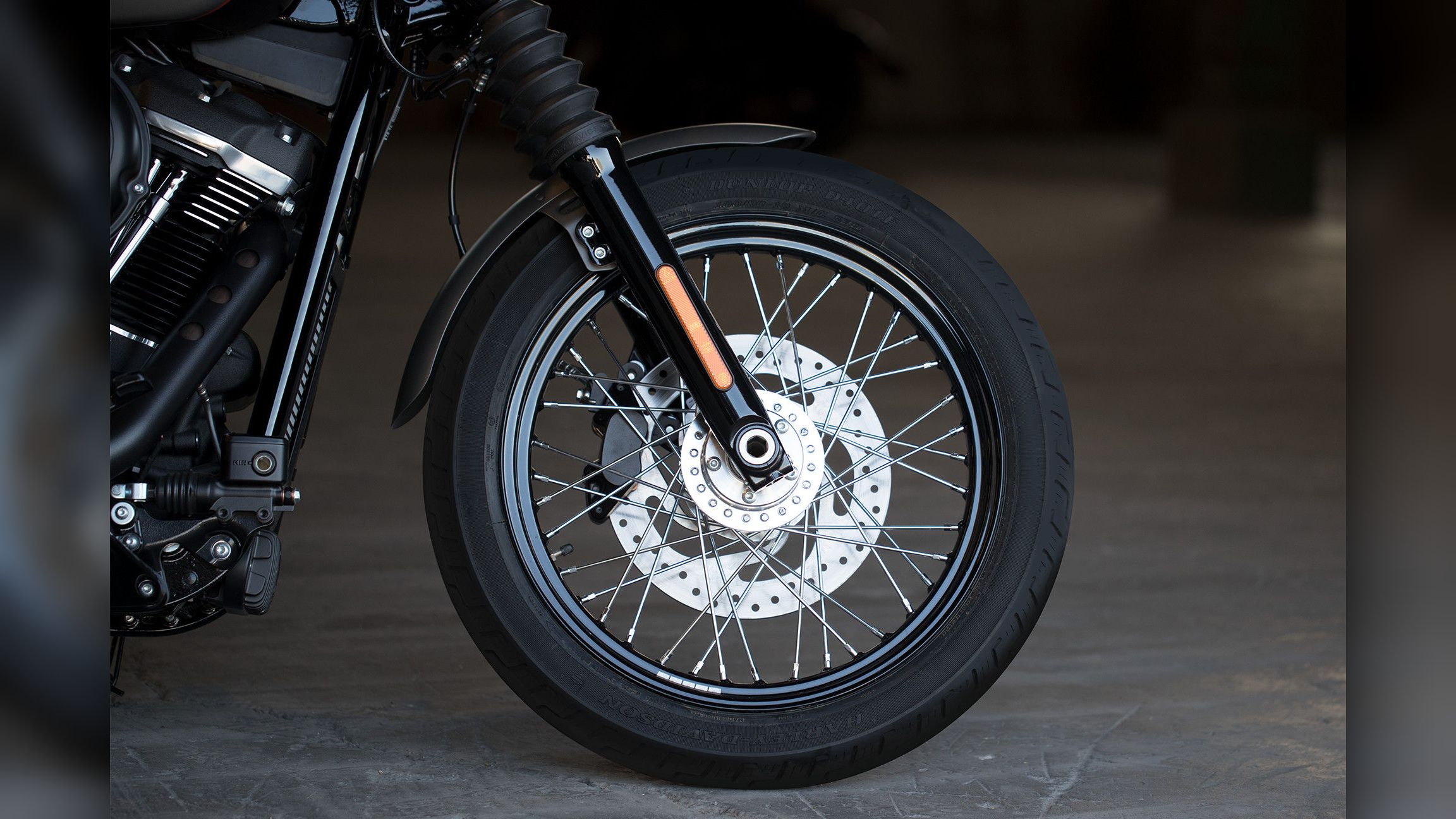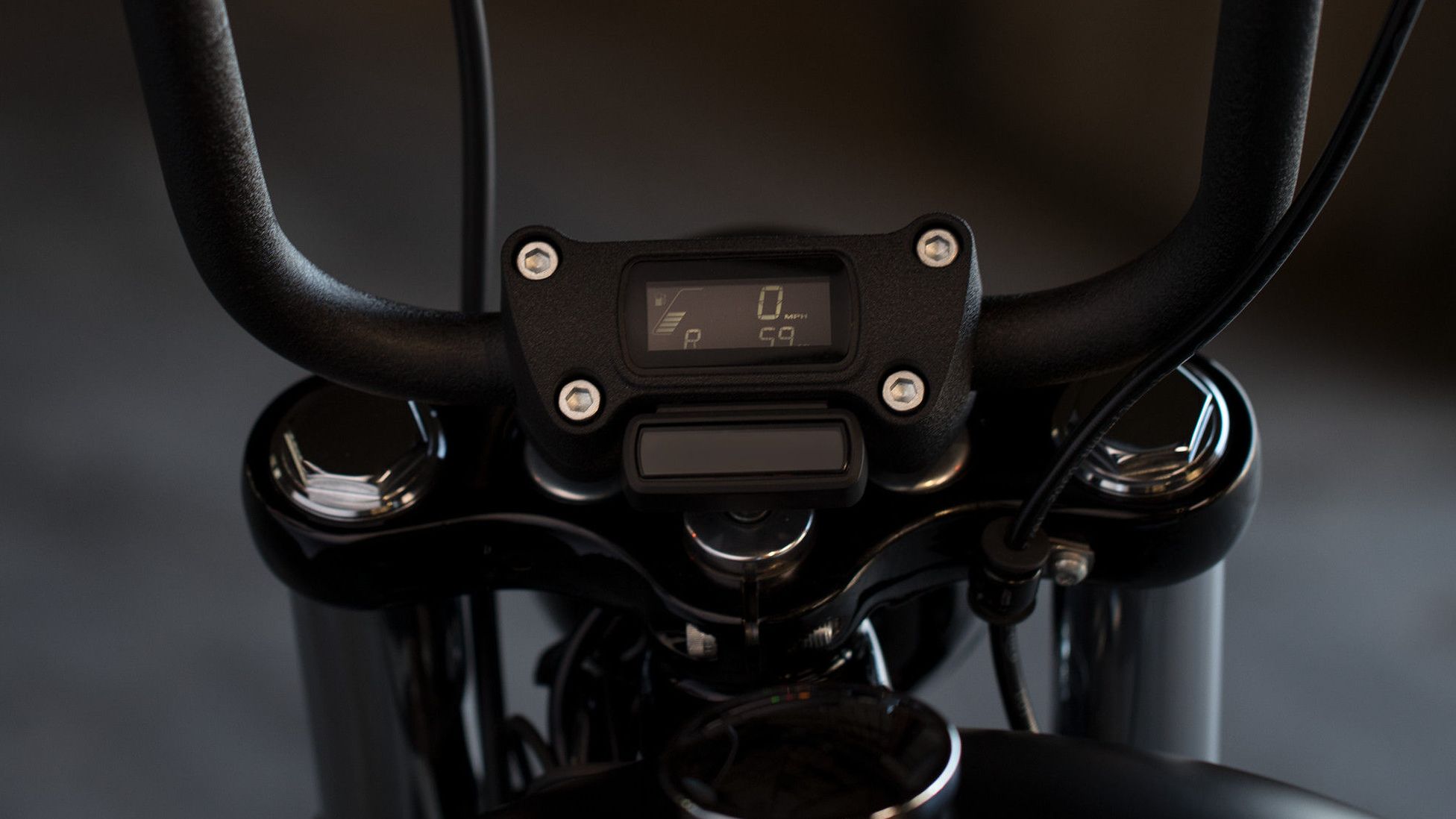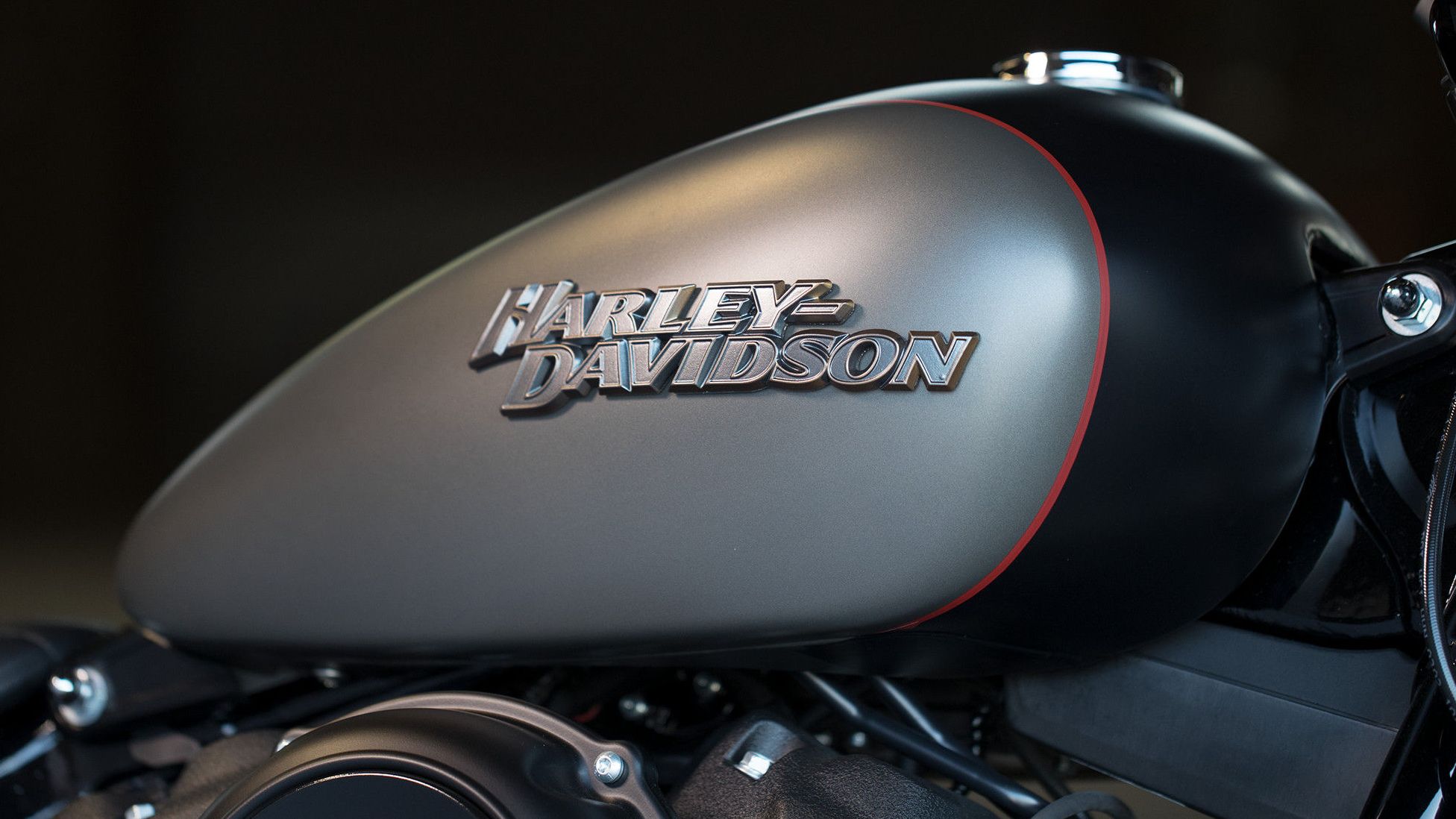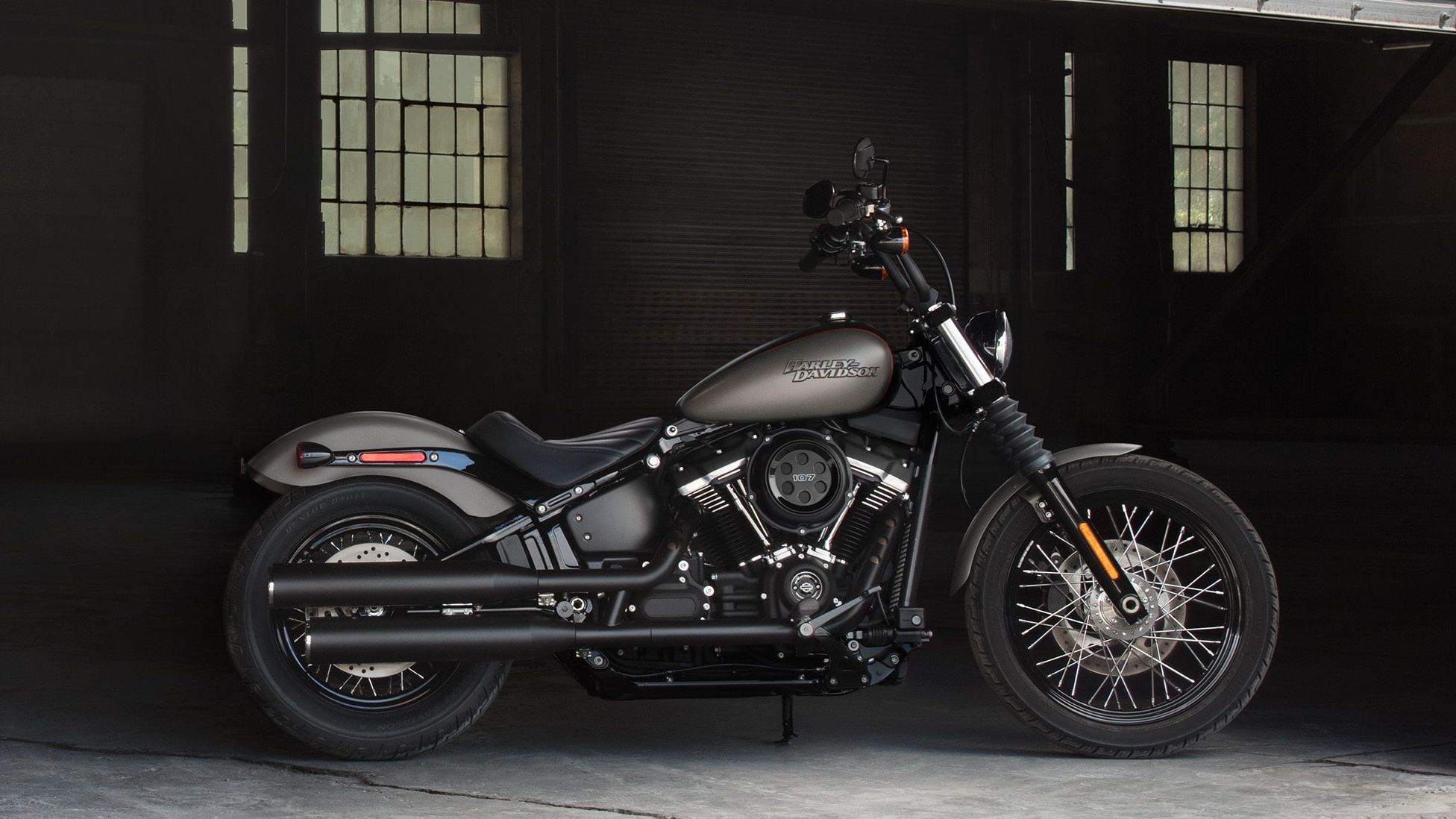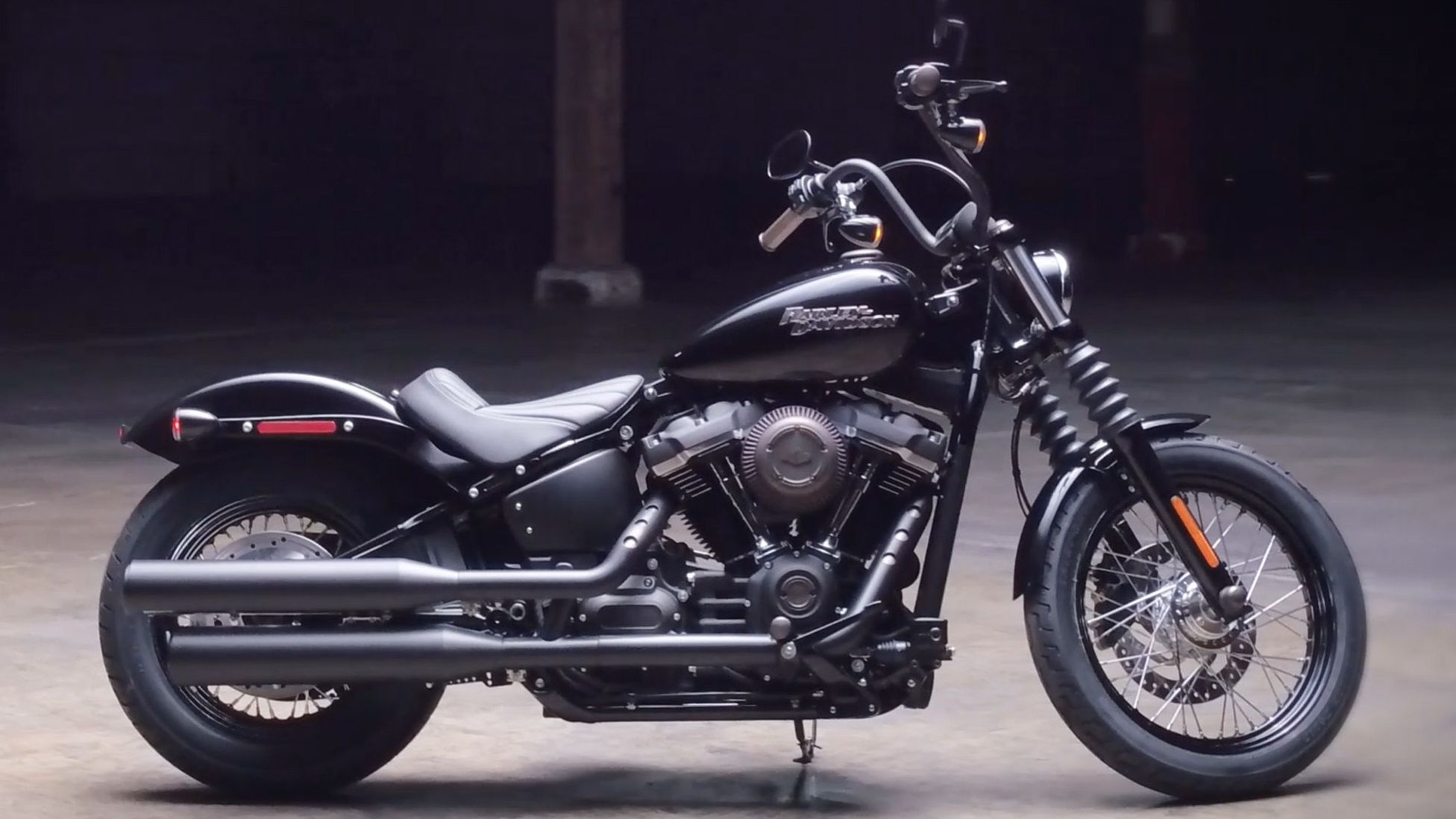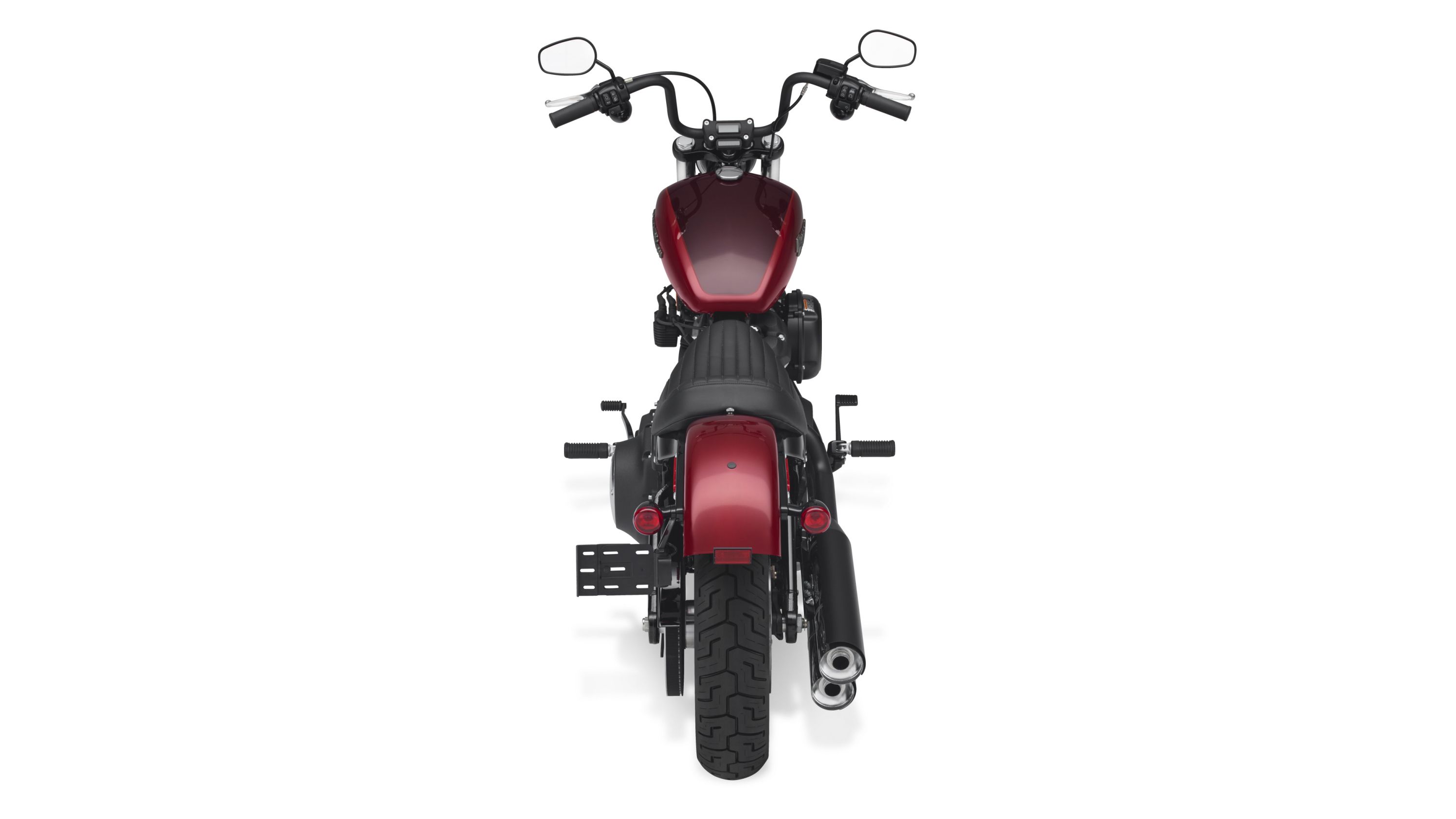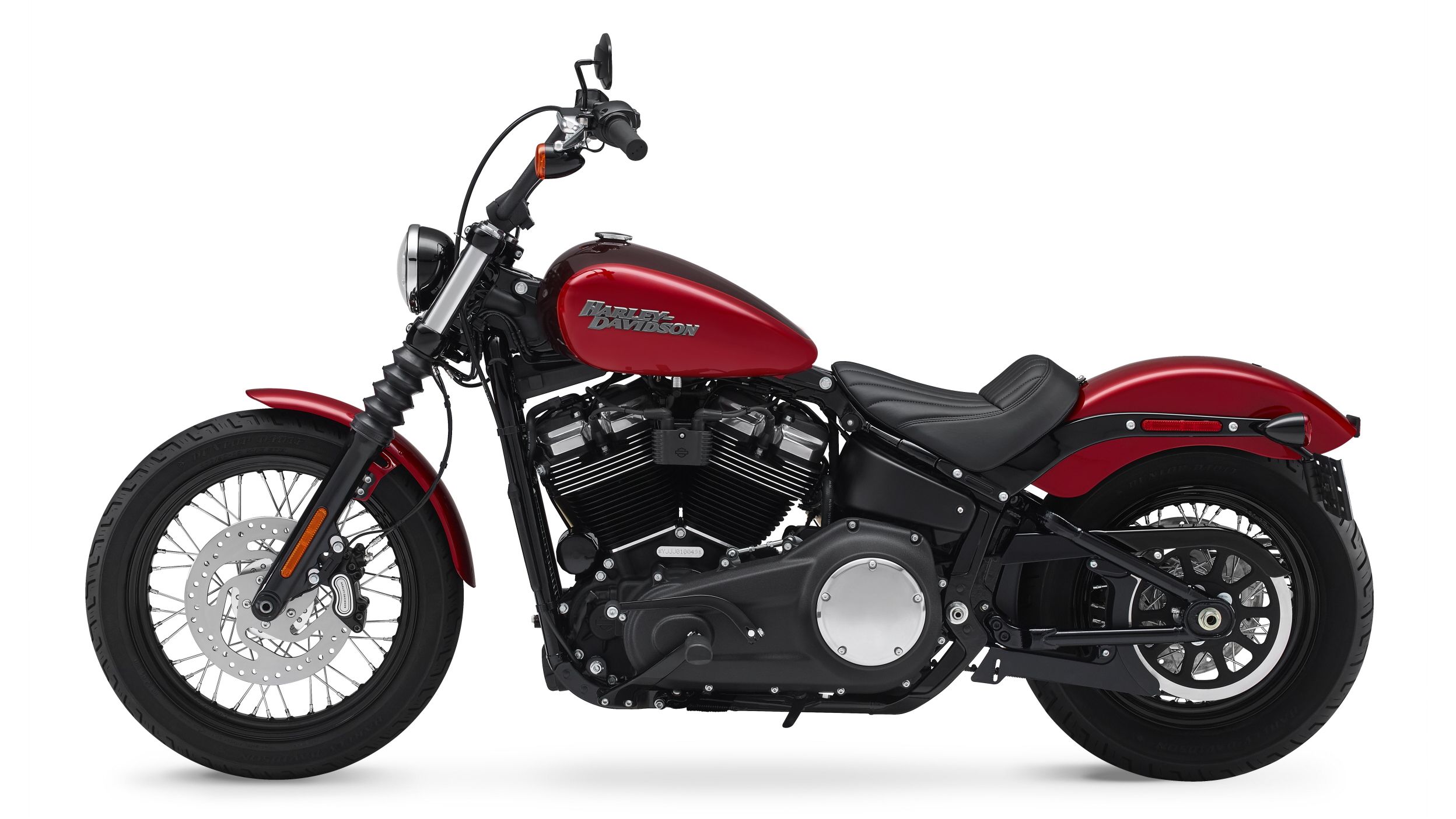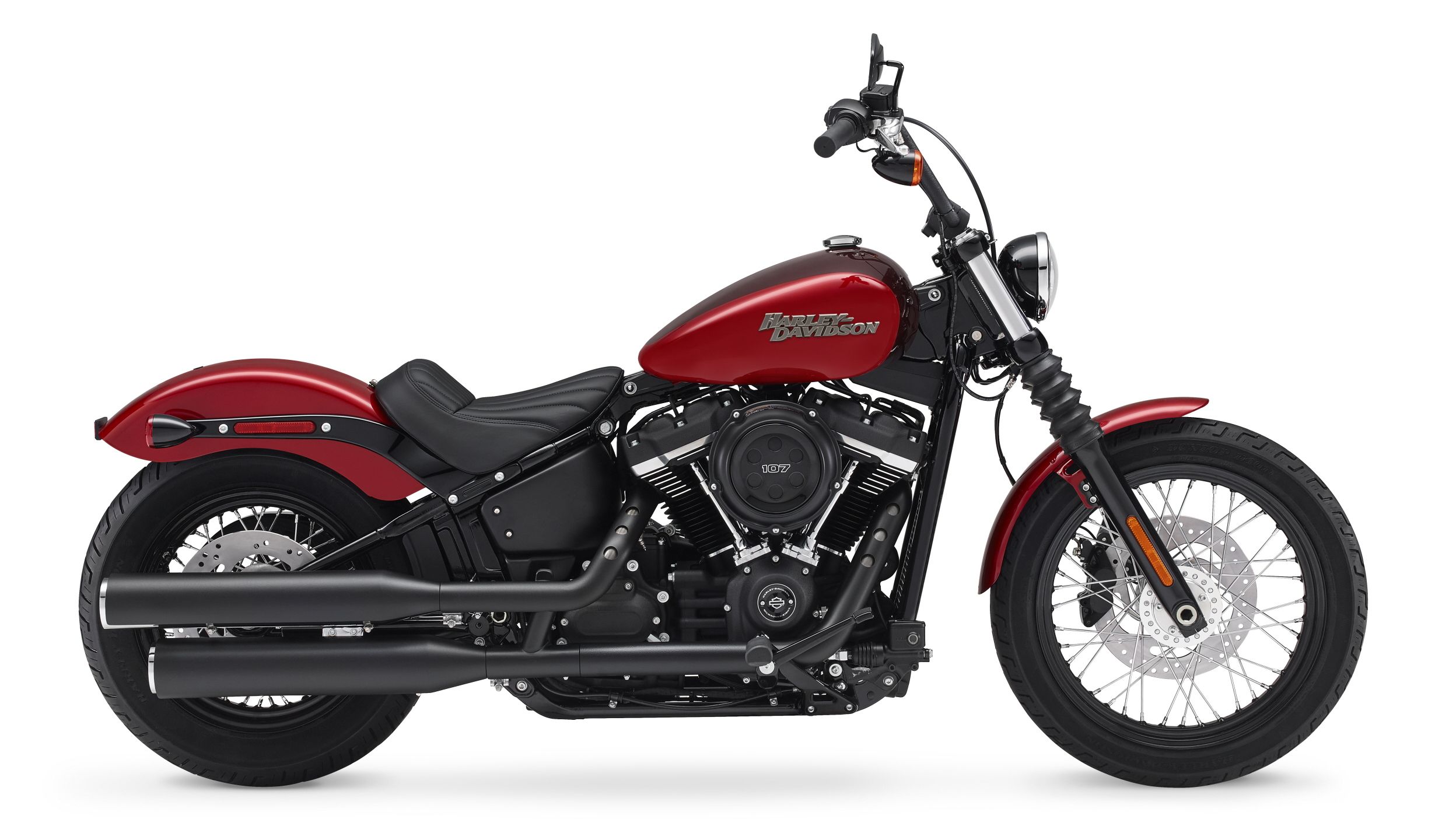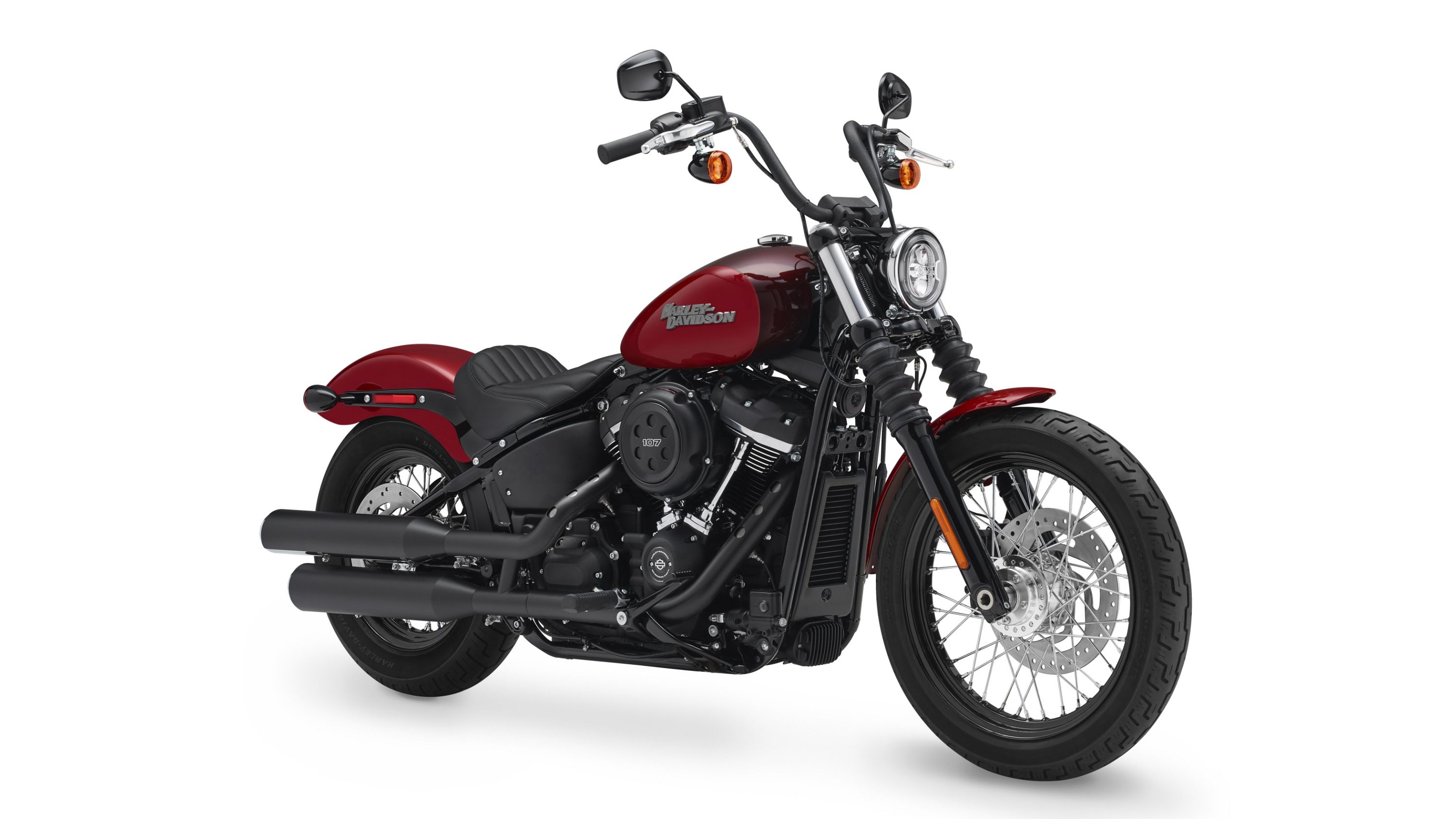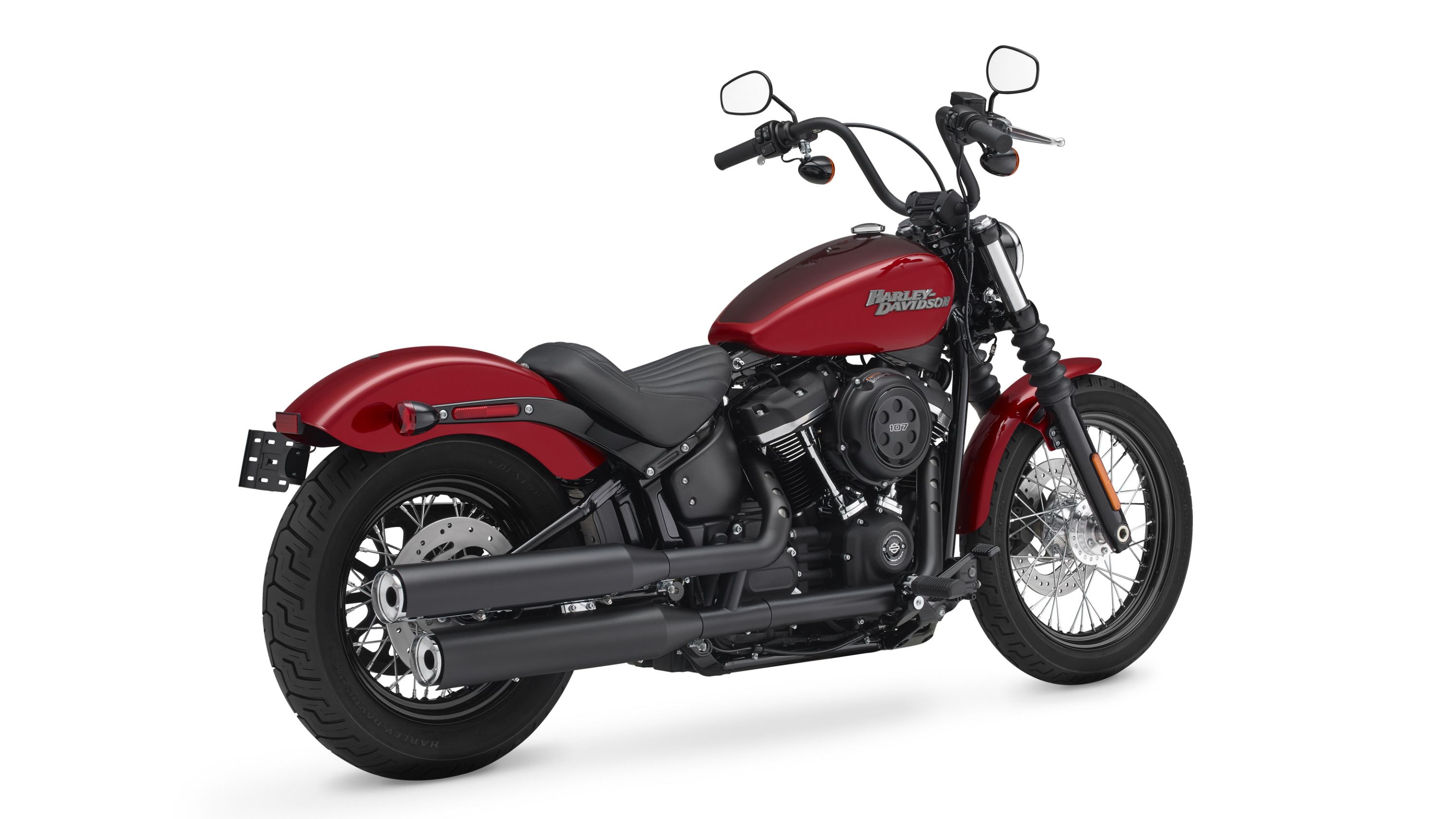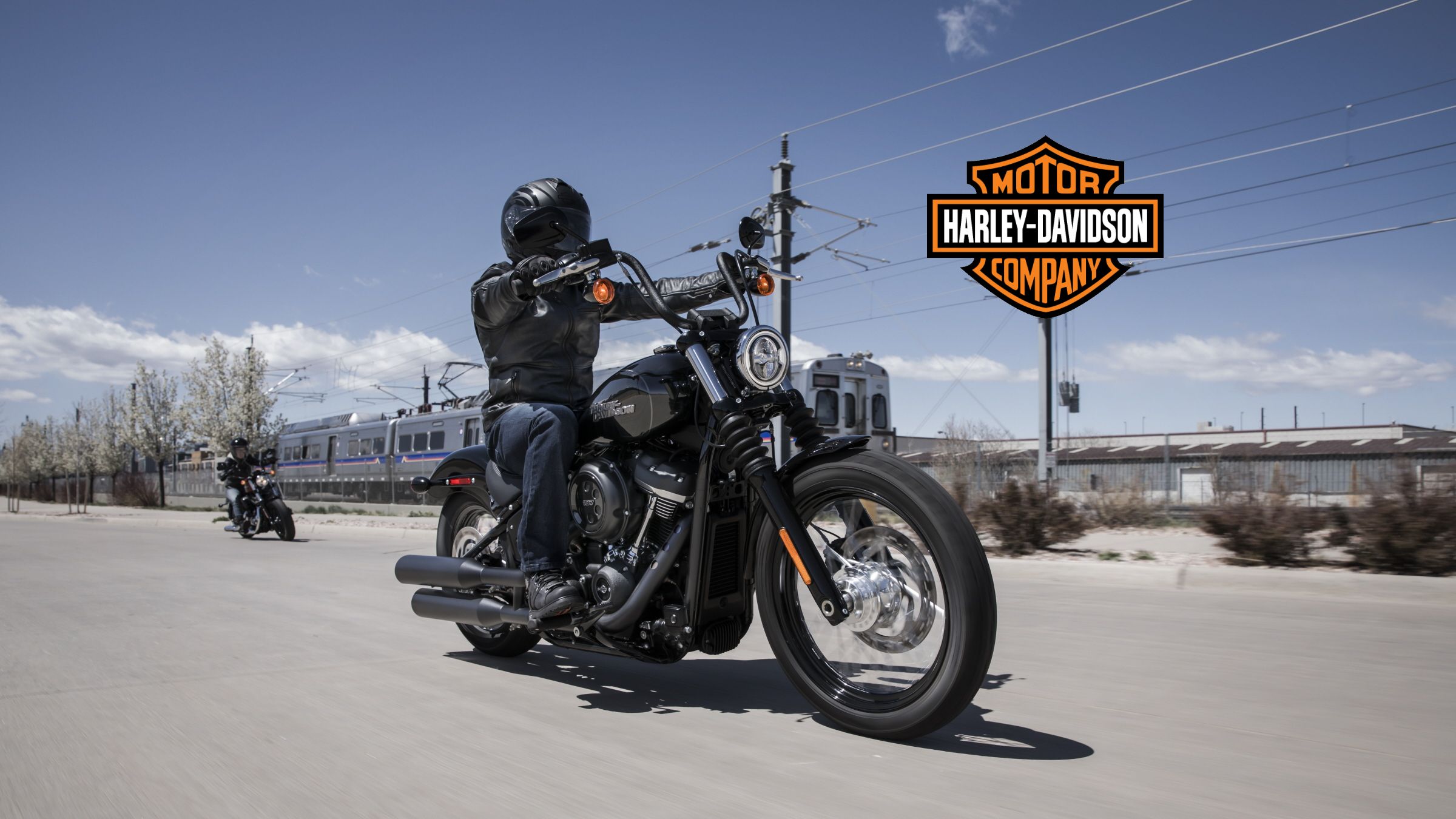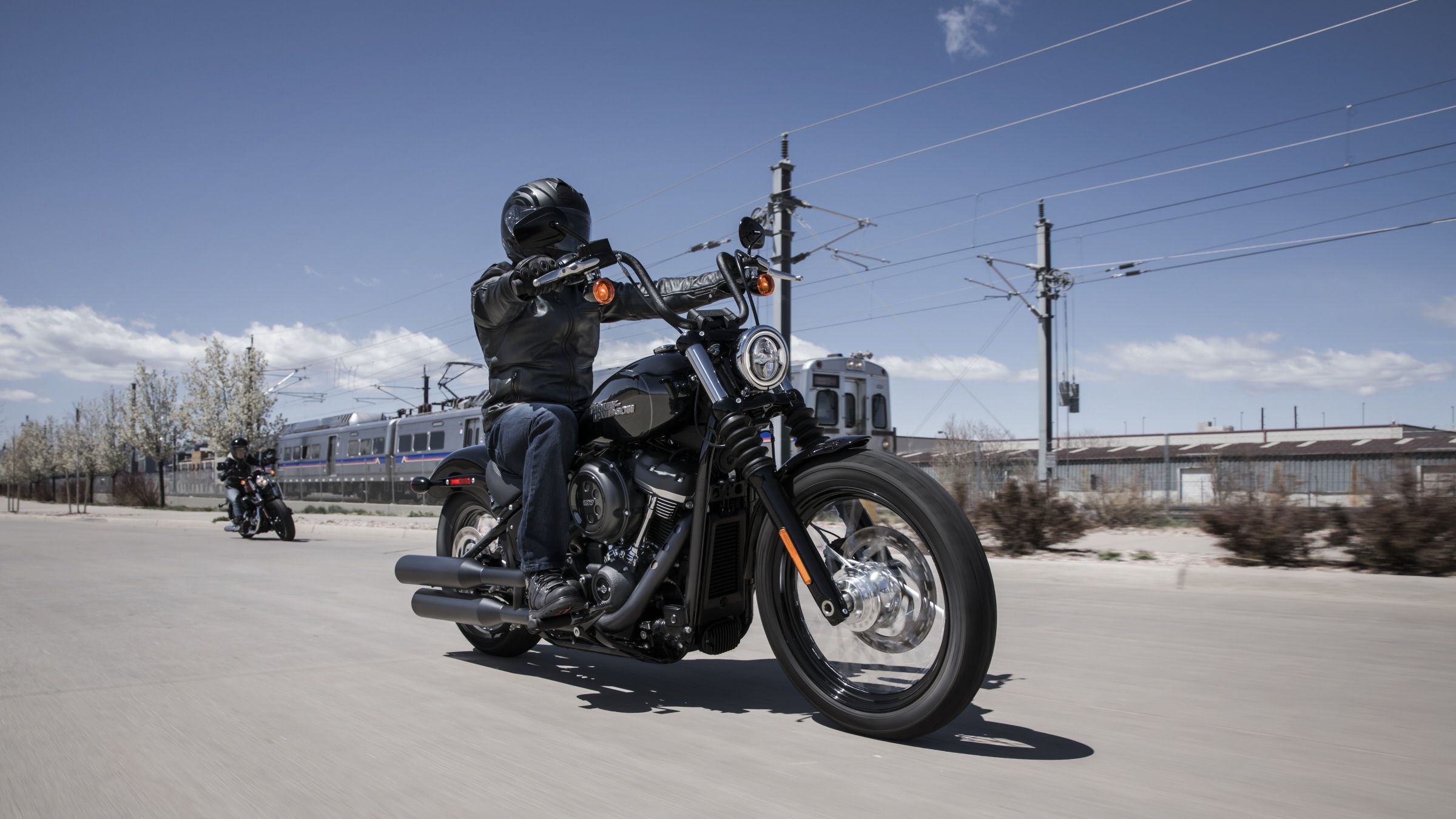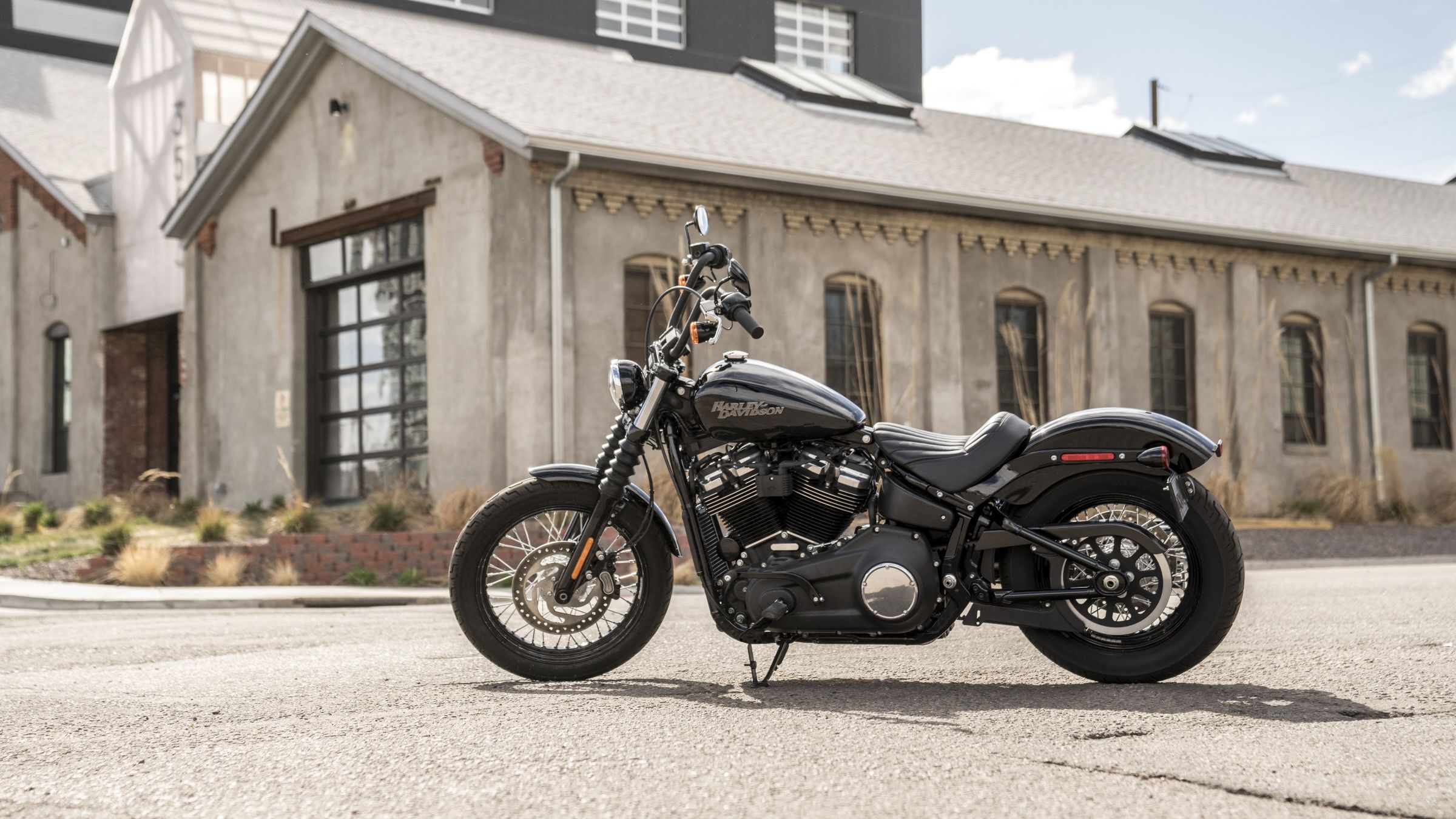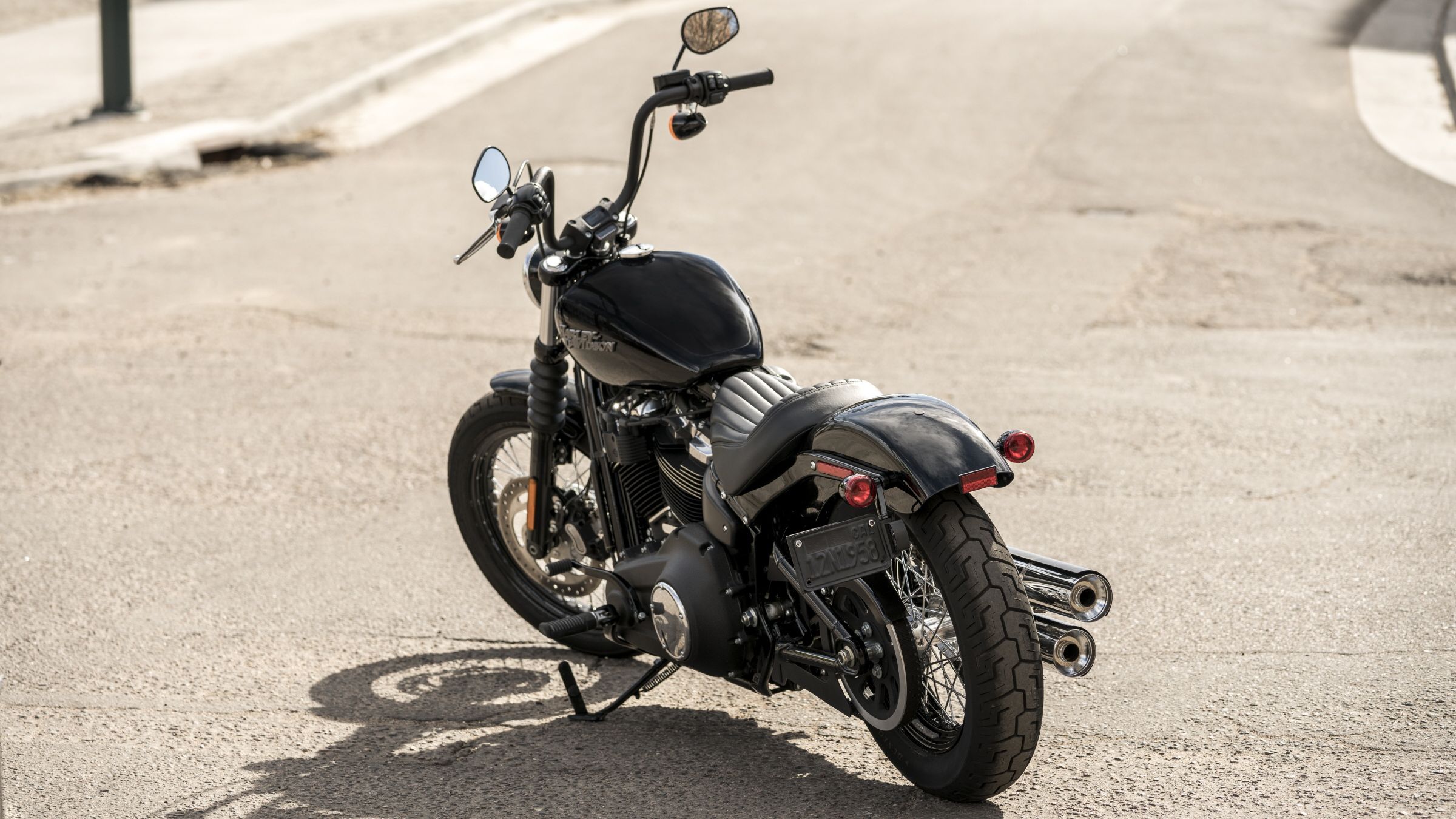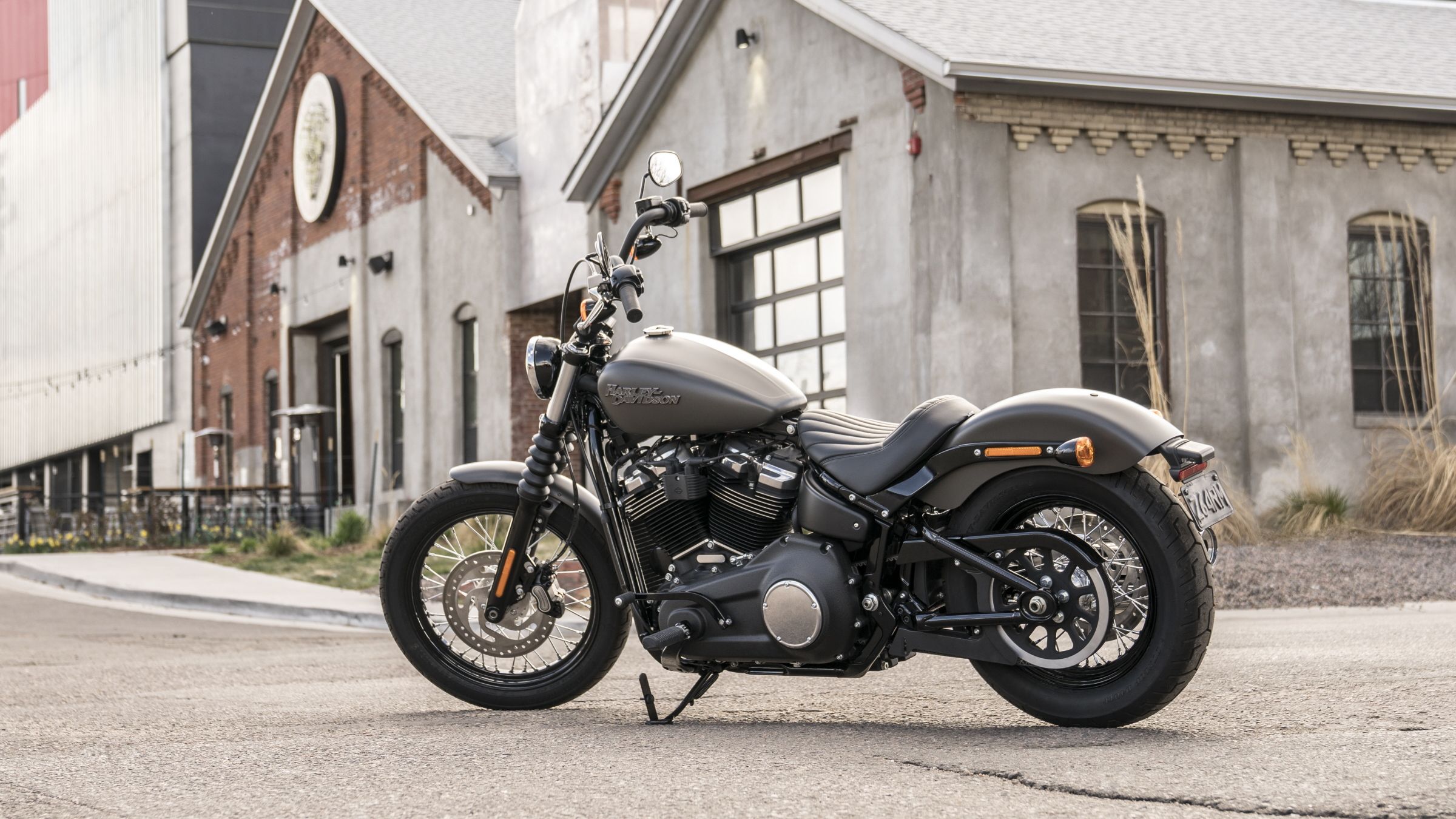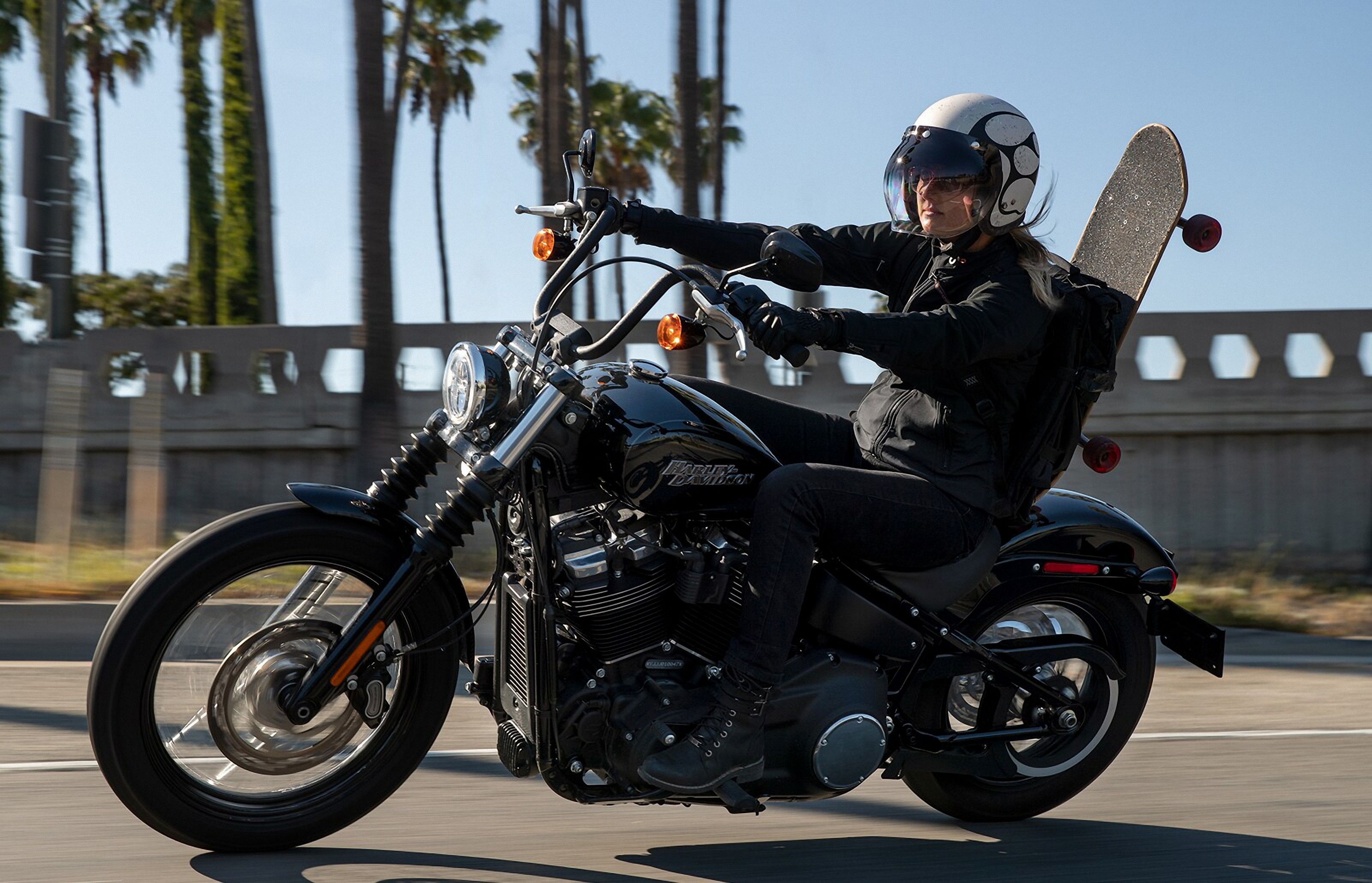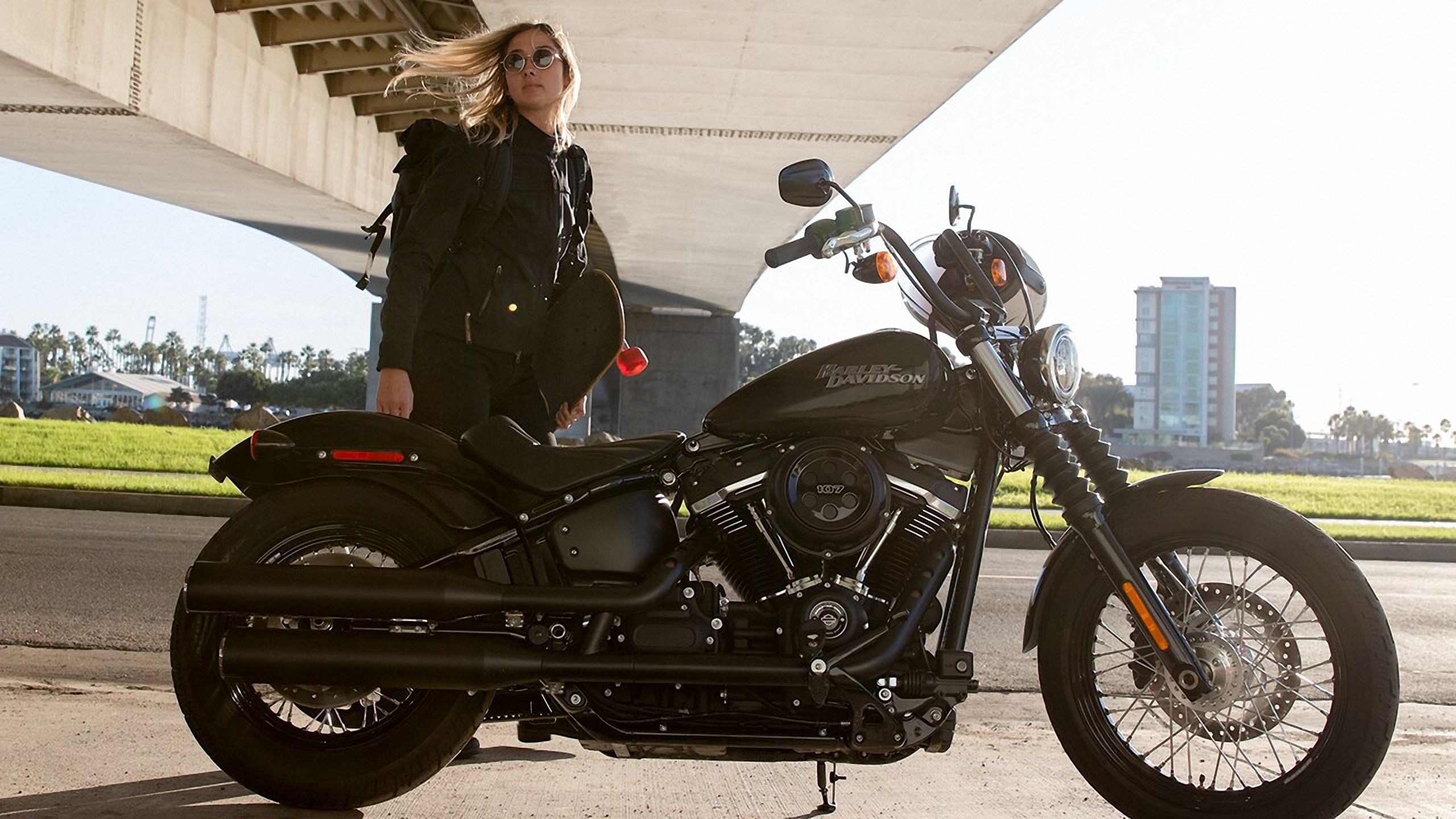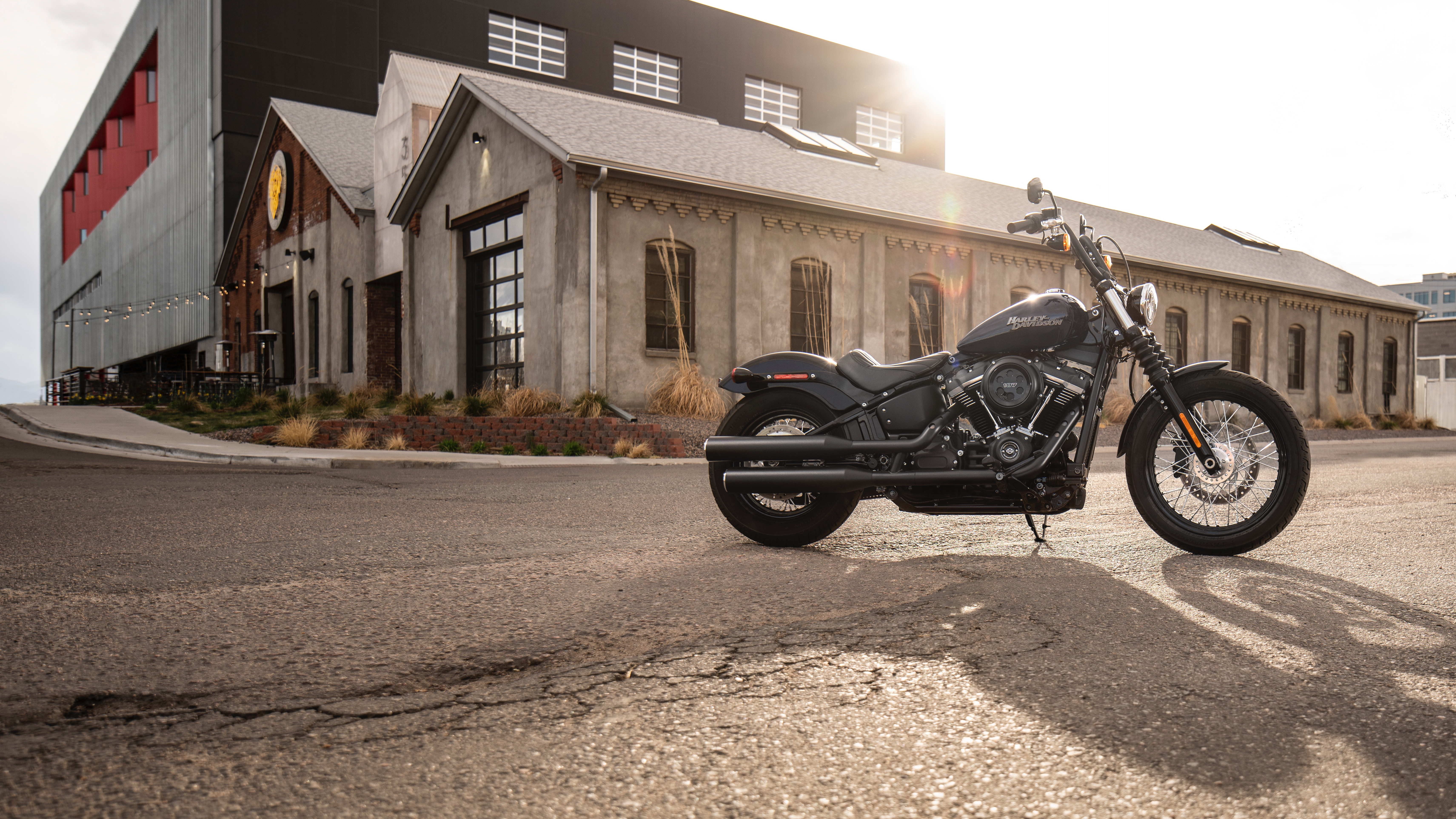The Harley-Davidson lineup underwent some serious changes in MY2018, and the chopped-down, Dyna-based Street Bob was rebuilt and reintroduced as a Softail model. Not only did it switch to Harley's faux-rigid style frame, but the frame itself was completely reinvented to the point where it bears little resemblance to the original that saw the light of day for the first time back in '84. Sure, it still has that classic Softail visage, but the factory achieved it in a totally different way this time, and any perceived similarities are only skin deep. To add to the revamp, the Street Bob was on the receiving end of a beating-heart transplant with the addition of the then-new-to-cruisers, Milwaukee-Eight 107 powerplant that brings over 100 pounds of grunt to the table. The Street Bob has more power, new frame, and a new family/model combination as it rolls through to 2020.
2018 - 2020 Harley-Davidson Street Bob
- Make: Array
- Model: 2018 - 2020 Harley-Davidson Street Bob
- Engine/Motor: Milwaukee-Eight 107
- [do not use] Vehicle Model: Array
Harley-Davidson Street Bob Design
Having switched from a Dyna build to a Softail design, the Street Bob ties into the era when juice-forks were brand new, and you had to wear a kidney belt to handle rough roads and/or long trips for the lack of any sort of rear suspension beyond the give in the rear tire. As its cleverly-ingenious name suggests, the factory bobbed, chopped, and customized it to emulate the custom-gasser bikes from back in the day that saw all superfluous equipment and components either pared-down or removed entirely.
Leading the way, a laced front rim and slightly trimmed front fender rides between blackout fork sliders complete with bellow gaiter-style dust guards. A classic cyclops LED headlight resides in a low-profile, blackout headlight can that visually ties right into the blackened tripletree, bullet turn-signal housings and mini-apes.
Moving aft from there, longtime fans will notice that the split tanks and tank-mount instrument console has been replaced by a cleaner (but not as classic-looking) one-piece, teardrop tank that looks a lot like the one used on the 1200 Sportsters, only smaller with a 3.5-gallon capacity. The instruments in said console were digitized and integrated with the handlebar-riser cap, and I, for one, am glad to see that sun-powered, chrome torture device gone.
A deep-scoop, 26.8-inch high solo seat comes nestled in the swale between tank and tail with blackout struts bracing the chopped rear fender and bullet rear turn signals. The guys in the paint booth must have some stock in the black paint market, cause they went for broke with even more achromatic treatment for the exhaust system. Too much black, you say? No such thing!
Harley-Davidson Street Bob Chassis
Even the bones of the Street Bob were revisited as part of the redesign process. The factory put together a skeleton with half the number of parts as the previous generation. Though it has downtubes that turn under the mill to form the classic double-cradle frame and doesn't fit the usual definition of a stressed-engine assembly, the plant is hard-mounted within the frame so it stiffens the assembly more like webbing or gussets, and less like a standing member that replaces some of the tubing.
Harley moved the rear suspension from below the transmission to right under the seat, and added a handy (literally hand-adjustable) feature that allows you to quickly adjust for changing needs, just watch out for that hot rear pipe that's in close proximity. Harley still insists on not embracing the adjustable front suspension that is nearly ubiquitous in this day and age, especially on bikes in this price bracket, though the factory isn't a complete stick in the mud as evidenced by the Showa Dual Bending Valve stems on the Street Bob. These new forks deliver a linear damping response across the range of motion for a more comfortable ride than you get from plain vanilla, but I submit that it would have been just as easy, and probably not much more expensive, than proper adjustable forks. Oh well, there's always next year, right guys?
At 630 pounds, I feel like the single front brake disc and four-pot anchor is pushing the envelope a bit, but you can upgrade the brakes with ABS for a few dollars more that should allow you to safely milk what brakes there are for all they're worth. Steering geometry is outstanding for straight-line work with 30-degrees of rake and 6.2-inches of trail, but naturally that comes at the expense of cornering performance. Even though you have to work a bit to reach it, the Street Bob can achieve lean angles up to 28.5 degrees to either side; not exactly knee-draggin' country, but enough for any ride billed as a cruiser.
|
Frame: |
Mild steel, tubular frame; rectangular section backbone; stamped, cast, and forged junctions; MIG welded; aluminum forged fender supports |
|
Swingarm: |
Mild steel, tubular sections, stamped x-member, forged axle junctions; MIG welded; removable belt spacer |
|
Front Suspension/Travel: |
Showa Dual Bending Valve 49 mm telescopic with aluminum fork triple clamps; dual rate spring; gaiter covers/ 5.1 in. (130 mm) |
|
Rear Suspension/Travel: |
Hidden, free piston, coil-over monoshock; 43 mm stroke; cam-style preload adjustment/ 3.4 in. (86 mm) |
|
Rake (steering head): |
30° |
|
Fork Angle: |
30° |
|
Trail: |
6.2 in. |
|
Lean Angle, Right/Left: |
28.5°/28.5° |
|
Tire, Front: |
Dunlop® Harley-Davidson® Series, bias blackwall D401F 100/90B19,57H,BW |
|
Tire, Rear: |
Dunlop® Harley-Davidson® Series, bias blackwall D401T 150/80B16,77H,BW |
|
Wheels, Front/Rear: |
Gloss Black, Steel Laced |
|
Brakes, Front: |
300 mm solid uniform expansion rotor, 4-piston fixed caliper |
|
Brakes, Rear: |
292 mm solid uniform expansion rotor, 2-piston floating caliper |
|
ABS: |
Optional |
Harley-Davidson Street Bob Drivetrain
As nifty as all that sounds, it's the Milwaukee-Eight engine on the Street Bob that steals the show. Debuted in prior years in the baggers and dressers, the Mil-8 brings a massive, 107-inch (1,746 cc) displacement to the table with no less than 110 pound-feet of torque on tap for your riding pleasure. A 100 mm bore and 111.1 mm stroke gives the engine its brand-typical, long-stroke layout, but the factory added counterbalancers to tame much of the associated vibration for a much smoother feel than one might expect.
In fact, die-hard fans with a few hundred-thousand miles under their belts will say that the vibration, and indeed the exhaust note, is too tame by far. To them I say; as far as the exhaust volume goes, the folks down at Screamin' Eagle still need to eat, and do you really miss having numb hands and nethers? miss having numb hands and nethers?}} Get over it, y'all, this is the 21st century and H-D has decided to join it, so suck it up. Well, not too far into said century; still no RbW throttle, traction control, or variable power delivery to be seen, but I'd lay odds that someone at the factory is looking at those features, at least, they'd better be.
Power flows from the engine through a standard clutch and six-speed transmission, then down to the rear wheel via reinforced belt drive. Unlike some of the other Softails, the factory doesn't offer the Street Bob in the larger Mil-8 114.
|
Engine: |
Milwaukee-Eight® 107 |
|
Bore x Stroke: |
3.937 in. x 4.374 in. |
|
Displacement: |
107 cu in (1746 cc) |
|
Engine Torque: |
110 ft-lb @ 3,000 rpm |
|
Compression Ratio: |
10.0:1 |
|
Fuel System: |
Electronic Sequential Port Fuel Injection (ESPFI) |
|
Exhaust: |
2-into-2 offset shotgun; catalyst in muffler |
|
Primary Drive: |
Chain, 34/46 ratio |
|
Final Drive: |
Belt, 32/66 ratio |
|
Clutch: |
Mechanical, 10 plate wet, assist & conventional |
|
Transmission: |
6-speed Cruise Drive® |
|
Gear Ratios (overall): |
1st: 9.311, 2nd: 6.454, 3rd: 4.793, 4th: 3.882, 5th: 3.307, 6th: 2.79 |
Harley-Davidson Street Bob Pricing
This is Harley's entry-level, Big Twin cruiser, so it falls out at the bottom of the pricing scale at only $14,599 in Vivid Black. As always, the King of Paint has a fistful of paint schemes up for grabs, but the solid colors will set you back another four Benjamins and the two-tone package rolls for $15,349 MSRP. The optional ABS package runs another $750, though the security option is standard, and California buyers can expect to pay $200 to get the requisite emissions package.
|
Model ID: |
FXBB |
|
Warranty: |
24 months, unlimited mileage |
|
Colors: |
|
|
└ 2018: |
Vivid Black, Olive Gold, Red Iron Denim, Wicked Red/Twisted Cherry, Industrial Gray Denim/Black Denim |
|
└ 2019: |
Vivid Black, Wicked Red Denim, Industrial Gray Denim, Billiard Blue, Rugged Gold Denim, Wicked Red/Twisted Cherry |
|
└ 2020: |
Vivid Black, Barracuda Silver Denim, River Rock Gray, Spruce, Billiard Red/Vivid Black |
|
Pricing: |
|
|
└ 2018: |
Vivid Black: $14,499, Color: $14,899, Two-Tone: $15,249 |
|
└ 2019: |
Vivid Black: $14,549, Color: $14,949, Two-Tone: $15,299 |
|
└ 2020: |
Vivid Black: $14,599, Color: $14,999, Two-Tone: $15,349 |
Harley-Davidson Street Bob Competitor
Harley's Softail lineup makes an unashamed play for the nostalgia market with the rigid-style frame geometry and clever swingarm arrangement that takes us right back to 1949 when H-D first released its Hydra Glide. There are a few other models around the world that try to simulate the same look, to varying degrees of success, but none quite as hot as the Triumph Bobber. The Bobber brings the same old-school charm, just with a distinct British flavor.
Triumph Bonneville Bobber
Laced wheels abound, as do bellowed fork gaiters, cut-back fenders and the liberal use of blackout instead of chrome. Both rides come stock with a solo seat, but unlike the Bonneville Bobber, you can add a P-pad to the Street Bob. While the rest of the Bobber is pretty cool looking, the rear end is where all the magic happens. (No giggety).
A triangular swingarm provides that classic hard-tail illusion with a coil-over shock tucked away under the seat to tame the motion of the articulated member. Front suspension is plain vanilla on the Trumpet, and vanilla with sprinkles on the H-D for a razor-thin advantage to Harley. Too bad for Triumph that the Bobber looks better than it feels on a long ride, something Harley corrected with its Softail revamp, so consider how you plan on using the thing before you commit. Brakes are likewise similar with only a single disc up front of the Brit, but Triumph bundles its ABS in with the standard equipment package, where it's an option on the Street Bob.
Once we get into the electronics, Triumph goes to work on Harley with a frozen garden hose. Ride-by-wire, variable power-delivery rider modes, and switchable traction control pulls the Bobber head-and-shoulders above its counterpart as far as modern fandanglery is concerned.
So what's the bad news on the Bobber? Well, it starts with the engine. At only 1,200 cc, Triumph leaves a lot of cubeage on the table against the 1,746 cc H-D with a concurrent loss of power. The oh-so British-looking Bobber plant cranks out 77 ponies and 78.2 pounds of twist; by all accounts sufficient for its 502-pound dry weight, but not even close to the power-cruiser neighborhood where the Street Bob hangs its hat.
The smaller engine allows Triumph to turn loose of the Bobber for $11,950 in Jet Black, a damn sight less expensive than the $14.5k Vivid Black Street Bob.
Read our full review of the Triumph Bonneville Bobber.
He Said
“While on paper the Bobber seems to perform well against the Softail, I can't stress enough how the lack of two-up seating and long-distance comfort really pigeonholes the Bonneville into barhopper/grocery-getter territory. The Softail has longer legs overall and the capacity to share with a friend, after you hit the accessories catalog for a pillion pad, that is.”
She Said
My wife and fellow motorcycle writer, Allyn Hinton, says, "It's really strange to say "Softail Street Bob" because the Street Bob had always been on the Dyna chassis up until the 2018 model. The brakes, even though they're still singles in the front, perform better than previous model years. I'm not a fan of the LCD instrument cluster -- I prefer analog for the speedometer -- but I do like that it's small and not mounted on the tank. Two things to consider if you're looking at this bike: decide if you want ABS before you buy because it can't be added later and if you think you might want to make changes to the bike, check ahead of time to see what options are available to you. The Street Bob in the Softail family doesn't have as many options as it did in the Dyna family."
Harley-Davidson Street Bob Specifications
|
Engine & Drivetrain: |
|
|
Engine: |
Milwaukee-Eight® 107 |
|
Bore x Stroke: |
3.937 in. x 4.374 in. |
|
Displacement: |
107 cu in (1746 cc) |
|
Engine Torque: |
110 ft-lb @ 3,000 rpm |
|
Compression Ratio: |
10.0:1 |
|
Fuel System: |
Electronic Sequential Port Fuel Injection (ESPFI) |
|
Exhaust: |
2-into-2 offset shotgun; catalyst in muffler |
|
Primary Drive: |
Chain, 34/46 ratio |
|
Final Drive: |
Belt, 32/66 ratio |
|
Clutch: |
Mechanical, 10 plate wet, assist & conventional |
|
Transmission: |
6-speed Cruise Drive® |
|
Gear Ratios (overall): |
1st: 9.311, 2nd: 6.454, 3rd: 4.793, 4th: 3.882, 5th: 3.307, 6th: 2.79 |
|
Chassis: |
|
|
Frame: |
Mild steel, tubular frame; rectangular section backbone; stamped, cast, and forged junctions; MIG welded; aluminum forged fender supports |
|
Swingarm: |
Mild steel, tubular sections, stamped x-member, forged axle junctions; MIG welded; removable belt spacer |
|
Front Suspension/Travel: |
Showa Dual Bending Valve 49 mm telescopic with aluminum fork triple clamps; dual rate spring; gaiter covers/ 5.1 in. (130 mm) |
|
Rear Suspension/Travel: |
Hidden, free piston, coil-over monoshock; 43 mm stroke; cam-style preload adjustment/ 3.4 in. (86 mm) |
|
Rake (steering head): |
30° |
|
Fork Angle: |
30° |
|
Trail: |
6.2 in. |
|
Lean Angle, Right/Left: |
28.5°/28.5° |
|
Tire, Front: |
Dunlop® Harley-Davidson® Series, bias blackwall D401F 100/90B19,57H,BW |
|
Tire, Rear: |
Dunlop® Harley-Davidson® Series, bias blackwall D401T 150/80B16,77H,BW |
|
Wheels, Front/Rear: |
Gloss Black, Steel Laced |
|
Brakes, Front: |
300 mm solid uniform expansion rotor, 4-piston fixed caliper |
|
Brakes, Rear: |
292 mm solid uniform expansion rotor, 2-piston floating caliper |
|
ABS: |
Optional |
|
Dimensions & Capacities: |
|
|
Length: |
91.3 in. |
|
Overall Width: |
34.1 in. |
|
Overall Height: |
45.7 in. |
|
Wheelbase: |
64.2 in. |
|
Seat Height, Laden: |
25.8 in. |
|
Seat Height, Unladen: |
26.8 in. |
|
Ground Clearance: |
4.9 in. |
|
Fuel Capacity: |
3.5 gal. |
|
Fuel Economy: Estimated City/Hwy: |
47 mpg |
|
Oil Capacity (w/filter): |
5 qt. |
|
Dry Weight: |
630 lb. |
|
Curb Weight: |
653 lb. |
|
GVWR: |
1,160 lb. |
|
GAWR, Front/Rear: |
450 lb./730 lb. |
|
Top Speed: |
125 mph (governed) |
|
Electric: |
|
|
Lights (as per country regulation), Indicator Lamps: |
High beam, turn signals, neutral, low oil pressure, engine diagnostics, ABS (optional), security, low battery voltage, low fuel |
|
Gauges: |
2.14" Viewable area, LCD Display with Digital Indicators: Speedometer, Odometer, Gear Indicator, Tachometer and Fuel Level, Dual Row of Indicators below riser clamp "dog bone" outline |
|
Details: |
|
|
Model: |
FXBB |
|
Warranty: |
24 months, unlimited mileage |
|
Colors: |
|
|
└ 2018: |
Vivid Black, Olive Gold, Red Iron Denim, Wicked Red/Twisted Cherry, Industrial Gray Denim/Black Denim |
|
└ 2019: |
Vivid Black, Wicked Red Denim, Industrial Gray Denim, Billiard Blue, Rugged Gold Denim, Wicked Red/Twisted Cherry |
|
└ 2020: |
Vivid Black, Barracuda Silver Denim, River Rock Gray, Spruce, Billiard Red/Vivid Black |
|
Pricing: |
|
|
└ 2018: |
Vivid Black: $14,499, Color: $14,899, Two-Tone: $15,249 |
|
└ 2019: |
Vivid Black: $14,549, Color: $14,949, Two-Tone: $15,299 |
|
└ 2020: |
Vivid Black: $14,599, Color: $14,999, Two-Tone: $15,349 |
Further Reading
Harley-Davidson
Read more Harley-Davidson news.


